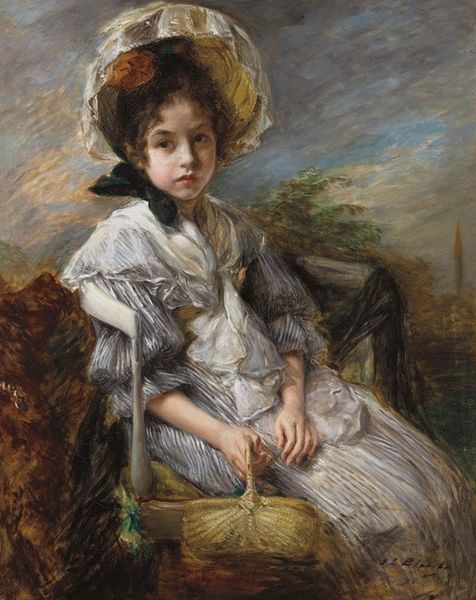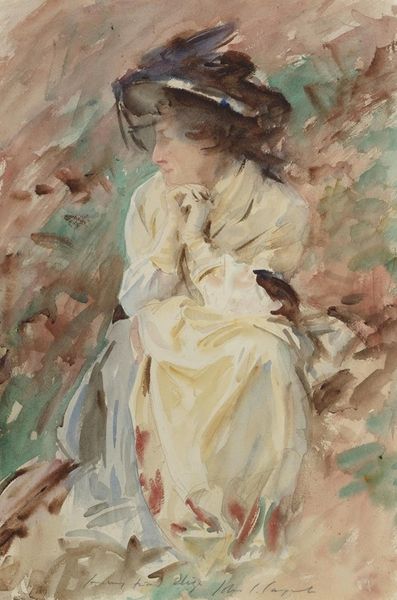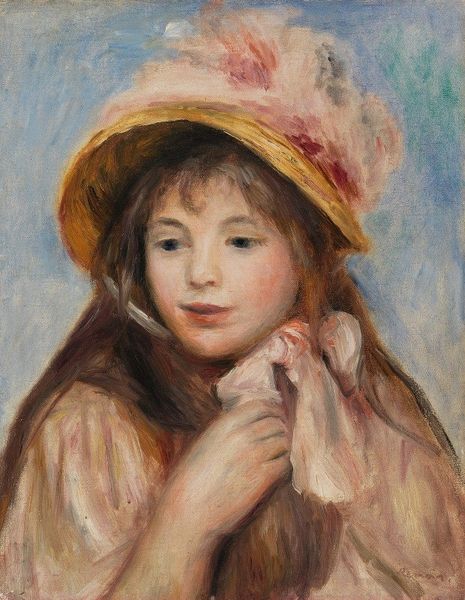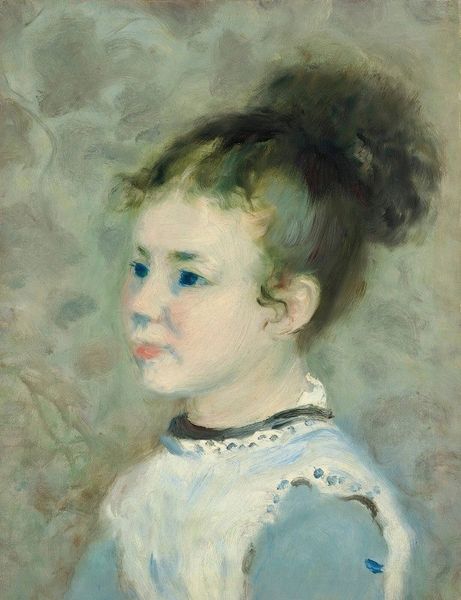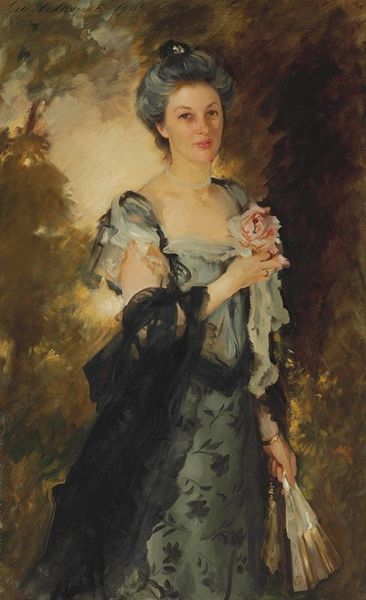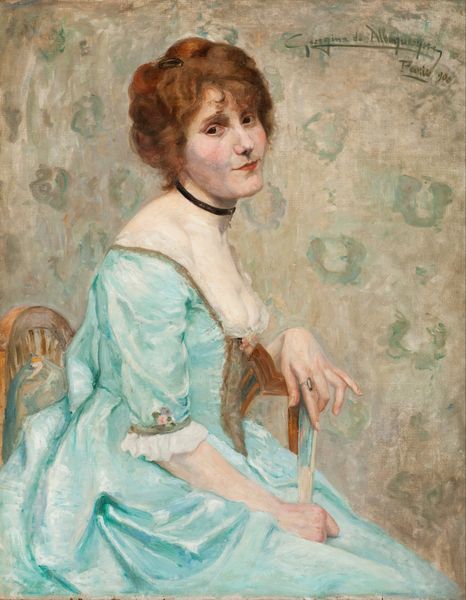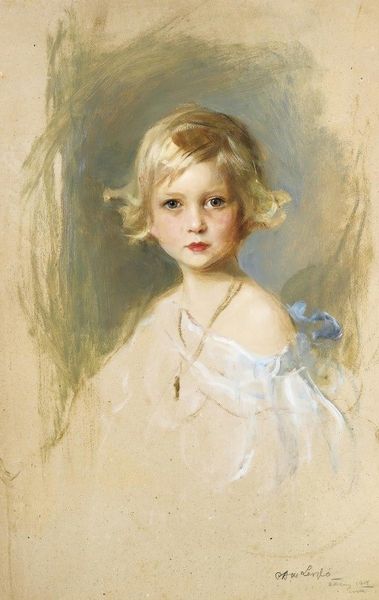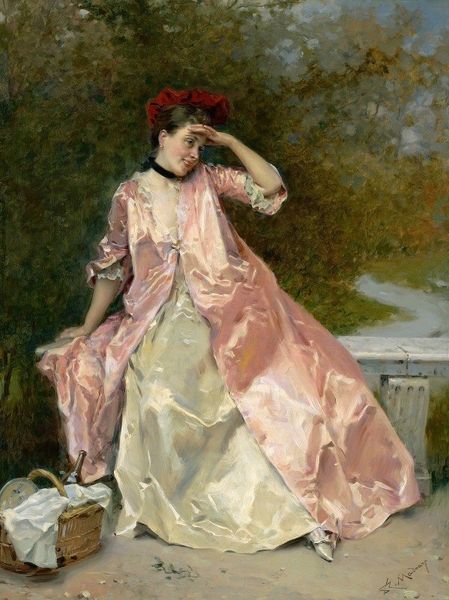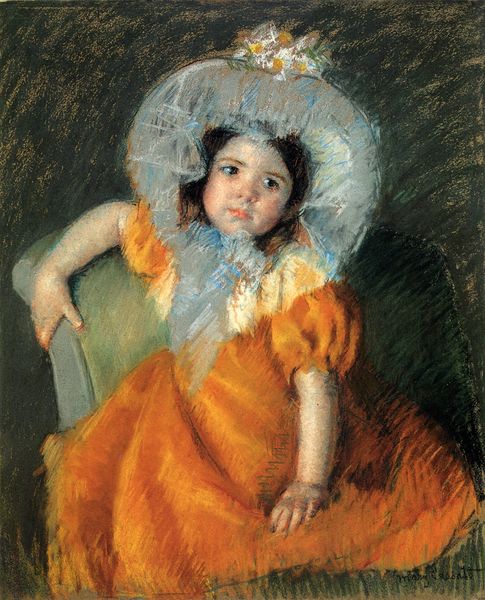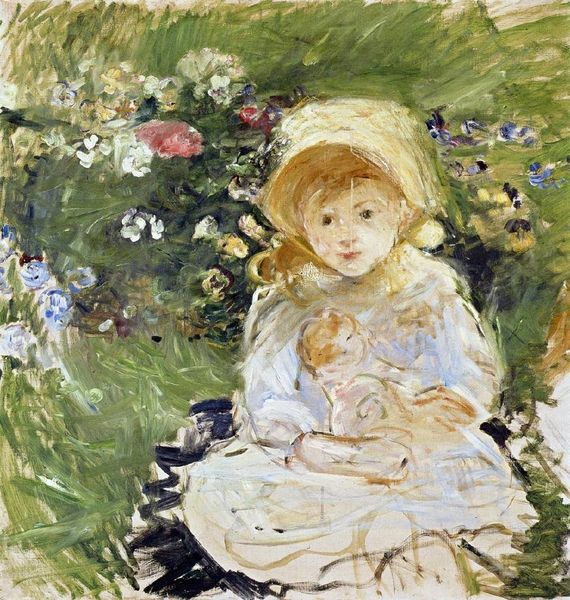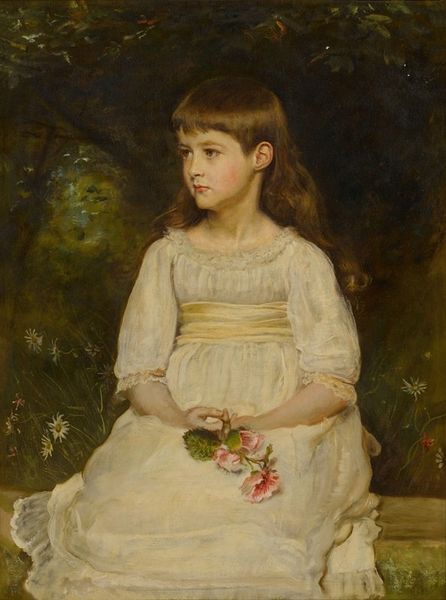
Copyright: Public Domain: Artvee
Jacques-Émile Blanche painted this portrait of a girl in a white dress during a period of significant social transformation in France. Through the visual codes of dress, we can consider how this image creates meaning. White dresses in portraiture were often associated with innocence and purity, reflecting the restrictive social expectations placed on young women. But the girl's direct gaze hints at a challenge to this restrictive stereotype. Blanche, belonging to the upper-middle classes, captured the mores of the Belle Époque. Institutions such as the family, the education system, and the art world itself, all influenced and reinforced societal norms. Was Blanche's portrait reinforcing these traditional values, or hinting at a shift in social expectations? The historian can investigate this question by researching the cultural context of the time, studying literature, fashion, and social commentary to understand better the politics of imagery and the social conditions that shape artistic production.
Comments
No comments
Be the first to comment and join the conversation on the ultimate creative platform.

